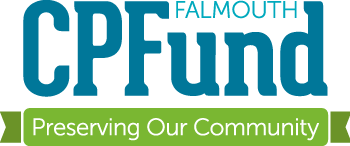Oyster Pond Invasive Species Removal
Location: Woods Hole MA 02543
Applicant: Oyster Pond Environmental Trust
Allocation: $6,650 and $8,600
Year/Article: April 2009, A22; November 2012, A46
In 2006 the Oyster Pond Environmental Trust (OPET) began a multi-year project to remove and eliminate invasive species that were choking the borders and watershed of Oyster Pond, especially phragmites, or common weed (Phragmites australis). Common reed forms dense, almost impenetrable stands as high as fifteen feet, spreading by rhizome runners, and it can spread ten feet in just one year. It is especially difficult to eradicate because dormant sections of the root system spring into action when cut. Moreover, each node on the canes can root and grow into a new plant. A few plants can quickly overwhelm a wetland site, choking out native plants, changing water hydrology, and altering wildlife habitat, thus negatively affecting amphibians, animals, and birds that depend on native plants for food and nesting sources. In 2006 the weed was overwhelming cattails, bayberry and other natives around Oyster Pond and cutting off view of the pond from Surf Drive and the Shining Sea Bikeway.
In the first three years, 250 feet of shoreline had been cleared by volunteers using the “cut and drip” treatment, dripping herbicide into the cut cane in late summer. OPET received support for this work from the Woods Hole Foundation, Salt Ponds Bird Sanctuaries, and Falmouth Associates as well as the help of fourteen AmeriCorps volunteers and volunteers from OPET and WISC. This was tedious, slow and laborious work and inadequate to the problem given the number of phragmites. OPET needed to change to the more efficient method of cutting the phragmites to the ground in the spring and then having a licensed pesticide applicator spray the stubs with a safe aquatic version of herbicide. OPET planned to work with the Falmouth Wetlands Invasives Steering Committee (WISC) and sought approval from the Conservation Commission for using this method with the goal of eradicating phragmites and purple loosestrife along the southern shore of the Pond. Eradication would contribute to preserving and enhancing the quality of this estuarine wetland and wildlife habitat while promoting species diversity and reopening scenic vistas.
In 2009 OPET applied for and received $6,650 from the CPFund for Phase I of this more aggressive invasives removal program. In 2012 it applied for $10,100 and received $8,600 for continuation and expansion of the program in Phase II to include the shores of Trunk River and the body of water called the Lagoon. It also planned to petition the Conservation Commission for permission to remove other invasives such as oriental bittersweet, multiflora rose, and grey willows. A few Japanese knotweed plants have also been spotted in the cleared areas, a plant the World Conservation Union lists as one of the world’s 100 worst invasive species. For this work OPET continued to receive support from the Woods Hole Foundation, the Salt Pond Area Bird Sanctuaries, Falmouth Associates, AmeriCorps volunteers, and in-kind labor. OPET is waiting for permission of one homeowner to eliminate a massive stand of phragmites on its property and hopes that Phase II will be completed in 2017. But the work to manage invasive species will be ongoing indefinitely.
In the first six years, an estimated 90-95 percent of the phragmites treated along the southern shore of Oyster Pond has been eliminated and native vegetation has begun rebounding, including the appearance of a rare, threatened species of pennywort, either Saltpond or Water pennywort. The former is on the list of threatened species of Massachusetts plants and there is concern for the latter.




